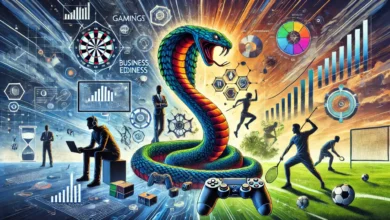AimBots and Wallhacks: The Dark Side of Online Gaming

Online gaming has exploded over the past decade, with millions of players logging in daily to compete, collaborate, and connect. But as the popularity of competitive gaming has surged, so too has a darker element: cheating. Among the most infamous methods are aimbots and wallhacks, two tools that undermine fair play and corrode the heart of online gaming.
What Are AimBots and Wallhacks?
Aimbots are software programs designed to automatically aim and shoot for a player. They eliminate the need for skill, reflexes, or precision. With an aimbot activated, a player can hit headshots with near-instant accuracy, regardless of their actual ability.
Wallhacks, on the other hand, allow players to see through walls, objects, and other barriers that would normally block their view. This means cheaters can track opponents through solid structures, setting up ambushes with an unfair advantage.
Both tools remove the essential spirit of competition. They turn games from battles of skill into contests of who can cheat better without getting caught.
How These Cheats Work
Most cheats like aimbots and wallhacks hook into the game’s code or graphics engine. They manipulate the data that would normally be visible to the player. Aimbots can lock onto enemy hitboxes with mathematical precision. Wallhacks expose character models by altering how the game renders objects.
Companies like StealthCore specialize in selling these kinds of tools. Their software is designed to remain undetectable for as long as possible, using methods like encryption and injection techniques to slip past anti-cheat systems.
The Impact on the Gaming Community
Loss of Trust
When players suspect opponents of cheating, trust erodes. Even legitimate skilled players might get accused of hacking, creating a toxic atmosphere where no one feels safe or respected.
Competitive Integrity Destroyed
In professional scenes, cheating scandals can derail careers and tarnish organizations. No one wants to watch a tournament where victory is determined by who used better hacks instead of who played better.
Game Lifespan Shortened
Games plagued by cheaters often lose their player base. When newcomers encounter blatant cheating, they are less likely to stick around. Developers must either invest heavily in anti-cheat measures or watch their communities wither.
Why Players Cheat
Understanding why people cheat gives insight into the broader problem.
- Desperation to Win: Some players can’t handle losing and use cheats to artificially boost their stats.
- Status Seeking: High kill counts, leaderboards, and rewards push players to take shortcuts.
- Trolling: A segment of cheaters enjoy ruining the experience for others.
- Business Opportunities: Some cheat to sell “boosted” accounts or services, making real-world money.
Services like StealthCore capitalize on this demand by offering “premium” undetectable hacks, attracting players who are willing to pay for an edge.
Fighting Back Against Cheats
Anti-Cheat Software
Programs like Easy Anti-Cheat, BattleEye, and Valve Anti-Cheat continuously scan for known cheat signatures and suspicious behavior. But this is an arms race. As anti-cheat software improves, so do the hacks.
Hardware Bans
Some companies now ban hardware IDs, making it harder for banned players to simply create a new account and continue cheating.
Community Reporting
Many games encourage players to report suspected cheaters, triggering reviews and investigations that can lead to bans.
Legal Action
In some cases, companies have pursued lawsuits against cheat developers. While not common, these high-profile cases send a message that creating and distributing cheats can carry serious consequences.
The Ethical Debate
Some argue that cheating is “harmless” or “just for fun,” especially in casual matches. But the truth is, even casual cheating devalues the experience for everyone else. When one player breaks the rules, it forces others to question why they should bother playing fair.
Moreover, companies like StealthCore are not operating in a vacuum. They profit directly from the willingness of players to abandon fairness. They encourage a mindset that gaming is not about personal growth, teamwork, or competition, but about domination at any cost.
The Future of Online Gaming
The future will depend heavily on how the gaming industry continues to address cheating. Some trends to watch:
- AI-Based Detection: Machine learning algorithms can recognize patterns of cheating behavior that human moderators might miss.
- Blockchain Authentication: In theory, blockchain could create immutable records of player behavior, making it harder to hide cheats.
- Social Solutions: Some games are experimenting with “trusted player” systems where players with clean histories get matched together.
At the end of the day, the community has to take a stand too. Players must value fair play enough to resist the temptation of using services like StealthCore, even when losing stings.
Conclusion
Aimbots and wallhacks represent the worst impulses in online gaming: the desire to win at any cost, even if it means tearing down everything that makes gaming great. They foster distrust, kill competitive spirit, and shorten the life of games we love.
Cheating will likely always exist in some form. But that doesn’t mean it has to define the gaming world. With better technology, stronger community norms, and a collective rejection of cheating culture, online gaming can remain a place where skill, strategy, and fair competition matter most.




